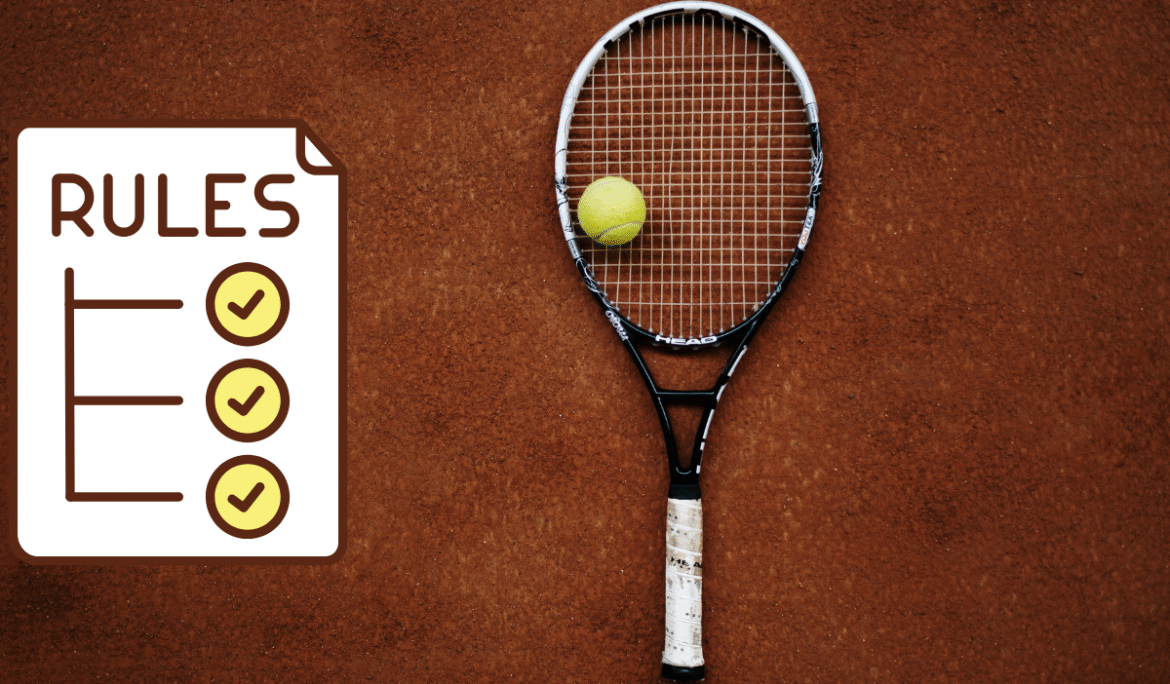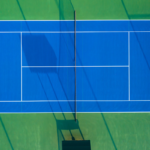Tennis Rules Explained Simply: Your Easy Guide to the Game
The first time you set foot on a tennis court can be like learning a new language. You watch players strike the ball, but how do they score? What are all those lines for? Don’t be embarrassed — you’re not the only one! The scoring system and court layout can be confusing for beginners at first.
As a lover of tennis and a tennis coach, I’ve been able to introduce many people to this great sport, and today I’ll help you make sense of the fundamental tennis rules. This guide will unravel all you need to know to comprehend — and savor — a game, whether you’re playing or watching.
The Absolute Basics: How a Point Works
Every tennis match is constructed point for point. Here is what is required in order to win a single point:
- The Serve: A player serves the ball to begin the point. They have to hit cross court (diagonally into the service box) on their opponent’s side and be positioned behind the baseline (back line).
- Two Chances to Serve: You receive a maximum of 2 tries to hit a legal serve.
- If you miss your first serve (a “fault” – you hit the net and it didn’t go in, or it went out of the service box), you are allowed a second serve.
- If you miss both serves, it is called a “double fault,” and you lose the point.
- If the serve hits the net but still goes in the right service box, it is a “let” and you re-do that serve.
- The Rally: Following a legal serve, players return the ball back and forth over the net; (the rally) You only get one bounce from the ball before you hit it on your side of the court.
- Winning a Point: You win a point if:
- The ball goes into the net by your opponent.
- If your opponent scores by hitting outside the court lines (an “out”).
- TO WIN A POINT: Your rival cannot strike the ball before it bounces once on their side.
- You made an “ace” (A serve that lands in the court but not reachable by your opponent.
- Your opponent double-faults.
Tennis Scoring Explained Simply: Love, 15, 30, 40, Game!
This is where tennis gets its special flavor. Tennis counts points within a game in a non-sequential fashion, rather than 1, 2, 3, 4.
- 0 points = “Love”
- 1st point = 15
- 2nd point = 30
- 3rd point = 40
- 4th point = Game (you must be leading by 2)
Example:
- Point: 1-0 (your score stated first) You get 15-Love
- Next point to them 15-All (or 15-15)
- You win the next point: 30-15
- They win the next point: 30-All (a.k.a. 30-30)
- You win the next point: 40-30
- The final point is yours: Game!
The “Deuce” and “Advantage” Rule
And that is the one tricky bit of tennis scoring. When the score achieves 40 – 40, it is named “Deuce.” A player wins the game from deuce by winning two consecutive points.
- After Deuce: Whoever wins the next point has the “Advantage.”
- If the point goes to the server — it’s called “Advantage In” (or “Ad-In”).
- If the person receiving the player gets the point, then it’s “Advantage Out” (or merely “Ad-Out”).
- Winning from Advantage:
- If the player with the Advantage wins the subsequent point, they take the game.
- If the player that had the Advantage loses the next point, the score returns to Deuce.
- And this can continue for quite a bit, causing some thrilling, lengthy matches!
Games Make a Set, Sets Make a Match
To mentally think of it, each part of a tennis match is like a layer of a pyramid: points form games, games form sets, and sets form a match.
Winning a Set
A player wins a set by winning a minimum of six games and also by at least two games.
- Winning sets 6-0, 6-1, 6-2, 6-3, 6-4
- At a score of 5-5: You automatically have to win by 7-5 to take the set.
- At 6–6: A “tie-break” game is normally played to decide the set.
The Tie-Break
A tie-break (when the score is 6-6 in games) follows a straightforward 1, 2, 3… scoring system.
- The tie-break is won by the first player whose score reaches 7 points with a margin of at least 2 points (e.g. 8-6, 7-3, etc.) and therefore wins the set.
- In a tie-break, the server blinks more often.
Winning a Match
It is normally a match that is played as a “best of three sets” or “best of five sets.”
- International — Best of three sets (first to two sets wins; most common for regular tours, but not all (women); maybe not common for non-pro tours Pro)
- Wins the match best out of five sets (not applicable for some mens Grand Slam tournaments).
Understanding the Tennis Court Lines
It may look like a bunch of lines on the court, but each line has a purpose! That knowledge is crucial when it comes to getting the ball into the right position.
- Baseline: The line at the back of the court. This line is a must for Servers to be stood behind. It is called “out” when a ball lands beyond this line in a rally.
- Singles Sidelines : Inner sides of the court. These define the singles court and the sole width of the court.
- Sidelines for doubles (Tram lines): The outer side lines. This makes the court wider and are only used in doubles play.
- Service Line: The line that runs parallel to the net that creates the back of the service boxes
- The center service line — the perpendicular line running horizontally down the center of the court, splitting the two service boxes into left and right halves of deuce court and advantage court
- Service Boxes — The two boxes, one on either side of the net, where a served ball is required to land.
- Center Mark: A small mark on the baseline to assist servers how far to stand (servers alternate serves from the right and left of this mark).
- Net:Half of the pitch is marked out by a dividing line, known as the net, to separate each side of the pitch. The ball must go over it!
Basic Etiquette and Other Important Rules
- Calling the Score: The server always calls the score prior to each point, with their own score first.
- Changing Ends: Players will alternate sides of the net following each odd-numbered game in a set (the 1st, 3rd, 5th, 7th, etc. games).
- Ball Hitting the Net on a Rally: If the ball hits the net on a rally but goes over and lands within the court boundaries, it is in play.
- Net Touch: You lose the point if you and any part of your racket touches the net while the ball is in play.
- During the Double Bounce when the ball hits the ground twice on your side before you strike it, you lose the point.
- Hitting Your opponent: You win the point if the ball strikes your opponent before it has bounced, but not if it has bounced first (except in the case of a serve which has not yet passed the service line).
Singles vs. Doubles Tennis: The Key Difference
Doubles (two players per side) and singles (one player per side) differ primarily in the depth of the court.
- Singles: Uses the inner sidelines.
- Doubles: Utilizes the outermost sidelines (the “doubles alleys”), enlarging the court.
The scoring system (points, games, sets, match) is constant for singles and doubles. In doubles, the serving order is more precise, with partners alternating games
Frequently Asked Questions (FAQs)
Q: What is “Love” in tennis?
A: “Love” means zero points. The etymology is debated, but one theory holds that it derives from the French word “l’oeuf,” or egg, representing zero.
Q: Can the ball bounce twice before I strike it?
A: No. If the ball bounces more than once on your side of the court, you lose the point. You have to strike it after its first bounce or in the air (a volley).
Q: What is a tennis “fault”?
A: A “fault” is an incorrect serve. This occurs when the serve lands outside the correct service box, hits the net and does not go in, or if the server steps on the baseline before making contact with the ball.
Q: Do I always have to serve on the diagonal?
A: Yes, all serves have to be served diagonally to the service box of an opponent.
What is a “break point”?
A: A “break point” refers to a point at which the receiving player has the opportunity to win a game when receiving serve from their opponent. To take a game on your opponent’s serve is a “break”
Ready to Play!
Now, armed with the basic tennis rules you’ve in your pocket, you’re going to have to savvy this game and get to love it! And don’t stress about needing to memorize all the above stuff as soon as you post this article; the best way to learn the rules is to pop on a court, start playing, and pick things up as you get going. Concentrate on the basic skills: serve, rally, and comprehension of the strange game of tennis scoring.
See you on the court!







